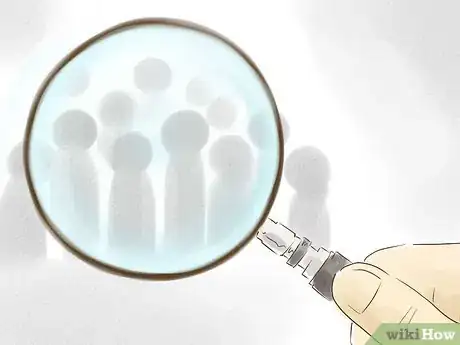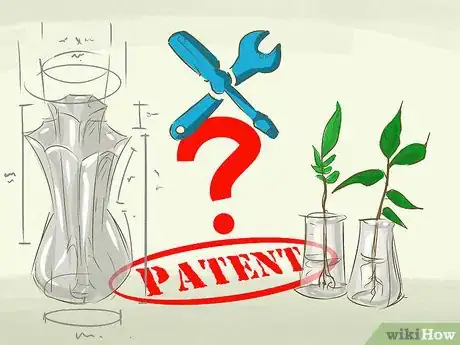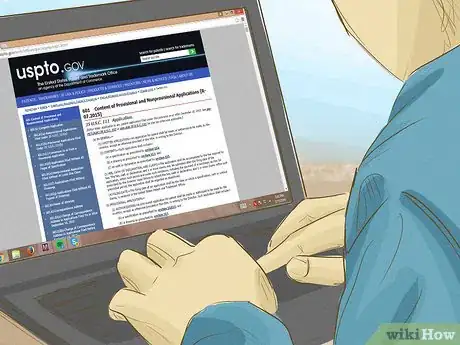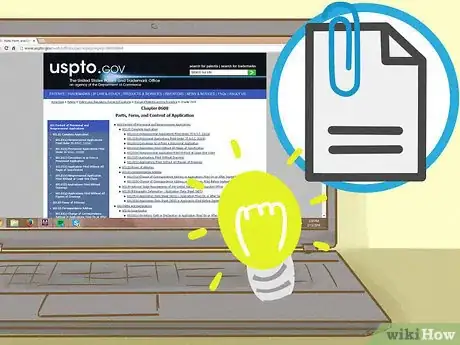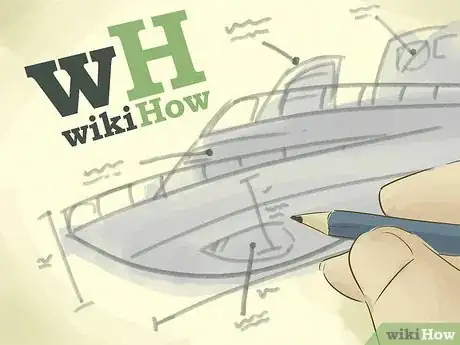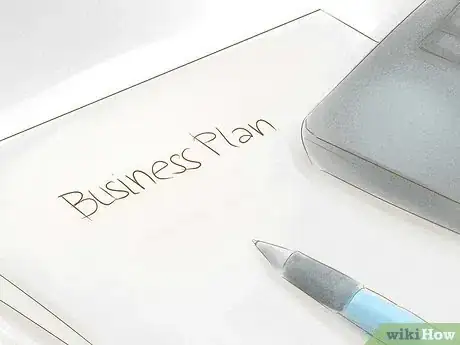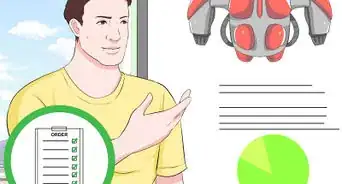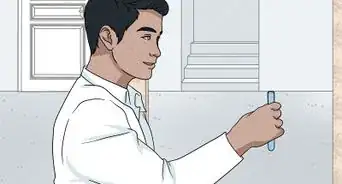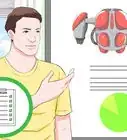This article was co-authored by Helena Ronis. Helena Ronis is Co-founder and CEO of AllFactors, a unified web analytics software to drive company's marketing and business growth. She has worked in product and marketing in the tech industry for over 8 years, and studied Digital Marketing & Analytics at the MIT Sloan School of Management Executive Program.
There are 10 references cited in this article, which can be found at the bottom of the page.
This article has been viewed 35,773 times.
Every successful invention solves a problem for the user. If you have an idea for an invention, do some market research as a first step. Get an idea of how many people face the problem your invention will solve. If you decide that there’s a market for your invention, write a formal business plan. As you plan your business, see if your invention can be registered as intellectual property. Most inventors need funding to turn their idea into a business. Your business plan can help you make a compelling case to investors.
Steps
Determining The Need For Your Invention
-
1Decide on the problem you are solving. Customers buy products and services to solve a problem. Solving a problem is the most common reason for a consumer to buy a product. Think about the problem that your invention is designed to solve.[1] mechanism that automatically inflates the tire. The rider does not need to pump up the tire to change a flat. A bike rider does not need to carry any extra tools or gadgets to inflate the tire, since the mechanism is built in to the tire tube itself.
- Your invention solves a problem. A bike rider on the road can change a flat tire more easily with your invention. Once you determine the problem you invention solves, you can start to find a market of people who will buy your invention.
- Assume that your research reveals a market for your invention. You can now come up with a price for the product and an initial level of sales. If the projected sales are large enough, you may be able to find investors for your invention.
-
2Find your ideal customer. To properly market and sell your invention idea, you need to identify your ideal customer. This term refers to the traits shared by the people who are most likely to buy your product.[2]
- Perform some market research. Read information about the bike industry and talk to people who work in the field. Find out the types of people who ride bikes and do their own minor repairs (like changing a flat tire while on the road).
- Say, for example, that you ideal customer is a man or woman between the ages of 25 and 50 years old. The customer goes on long weekend bike rides, normally with a group of riders. Your client has an upper level or high level of income.
- Once you identify your ideal customer, you can think about how you can market to them. If most of your clients are working professionals who are tech savvy, the best way to reach them may be though your website and social media posts.
EXPERT TIPHelena Ronis is Co-founder and CEO of AllFactors, a unified web analytics software to drive company's marketing and business growth. She has worked in product and marketing in the tech industry for over 8 years, and studied Digital Marketing & Analytics at the MIT Sloan School of Management Executive Program.Business Advisor
 Helena Ronis
Helena Ronis
Business AdvisorHelena Ronis, CEO and Founder of VoxSnap, tells us: "There are many ideas — it's about the execution of the idea. And, the only way to identify the best way to execute your idea is to understand who your customers are and what pain point you're solving, and then to prototype."
Advertisement -
3Determine if the market for your invention can develop into a business. Even though your product solves a problem, the market may not be big enough to justify starting a business. Do some homework to determine if the size of your market.[3]
- Say that your research finds that 10 million people in the US are frequent bike riders. Of that 10 million, 3 million are serious enough to make their own minor repairs, including flat tire changes while on the road.
- The 3 million serious bike riders experience 5 flat tires on the road each year. Those bike riders are changing 15 million flat tires a year.
- You estimate that your tire could attract 20% of the flat tire business for the serious bike riders. That’s (15,000,000 flat tires multiplied by 20% = 3,000,000 tire sales).
- You plan on selling the tires for $6. If you sold 3,000,000 tires you would generate $18 million in sales. This is the type of analysis in investor would want to see.
Creating Intellectual Property
-
1Define intellectual property. Investors may only be interested in your invention if it is considered intellectual property (IP). IP means that the creator has the exclusive legal right to use the product or service they create.[4]
- A patent is an exclusive right granted for an invention. The invention may be an idea or a process that solves a specific problem. The bike tire solves a problem for bike riders, for example.
- If you create literary or artistic work, you may be interested in a copyright. A copyright gives the creator rights over their books, music, artwork or films.
- You can think of a trademark as a sign. The sign distinguishes your product from other products in the marketplace. McDonald’s golden arches logo is considered a trademark. You can find our how to file a trademark using this link: Get a Trademark.
-
2Register your intellectual property. You need to register your IP to secure any legal rights over the use of your invention. Inventors can register their IP through the US Patent and Trademark Office (USPTO).[5]
- Determine if your invention is patentable. You cannot get a patent for an invention that has already been publicly disclosed by someone else. The USPTO has a database you can search for any public disclosures.
- A patent can come in several forms. A utility patent is a process, machine, or an improvement on an existing process or machine. The vast majority of patents are utility patents. There are also design patents. These are the two forms of patents that most often apply to business.
- Applying for a patent is expensive. To save time and to increase your chances for success, consider hiring an attorney. You can find an attorney who is licensed to practice before the USPTO.
- You will go through a similar process for a copyright for literary or artistic work.
-
3File the paperwork for your trademark idea. The USPTO describes a trademark as a brand name. It includes any word, name or symbol that is used to identify your product or service.[6]
- Your trademark identifies the source of the product or service. When you see a golden arch on a building, for example, you know that the building is a McDonald’s restaurant location.
- Another goal of your trademark is to distinguish your product from the products and services sold by other companies.
- When you register your trademark through the USPTO, you are notifying the public that you claim ownership of the trademark. This step is important, because registration creates the legal presumption of ownership. You’re putting people on notice that you own and intend to use the trademark.
Finding Investors
-
1Create a prototype. An investor will want to see your invention. If possible, create a working prototype of your invention and show it to investors.[7]
- If you can’t create a working version of your invention, try to generate 3-D drawings of your idea. You can also provide a diagram of how your product works.
- You may be able to find invention clubs, or other groups that are specifically interested in inventions. Your prototype or 3-D drawing will be particularly important to this group.
- Your goal should be to provide anything that will help the investor visualize exactly what your invention will do. As an inventor, you want them to understand your invention’s features and benefits.
-
2Write a detailed with an executive summary. The investors that you approach may review hundreds of investment opportunities each month. One way to distinguish yourself from other inventors is to create a comprehensive business plan. You can learn more about writing a business plan using this link: Write a Business Plan.[8]
- An investor will be interested in an idea that is registered as intellectual property. Assume that you apply for a patent on the bike tire idea. Your patent will prevent others from using your idea. Since you have a monopoly on the idea for a period of time, you can profit from the invention.
- Your business plan needs to clearly explain how you will use the investor’s funds. You can only do this if you’re thought carefully about your business. Many inventors need funds to produce their product early in the business. When you start selling the bike tire you produce, for example, you can start to repay the investors.
- The business plan should include the market research you’ve performed. You plan should state the problem you are solving and how your product addresses the problem.
-
3Look for potential investors. Once you finish your business plan, you are ready to present your idea to potential investors. You can find investors from a variety of sources. Think about people you already know in business. Those people may be a great resource for you.[9]
- Ask peers in your industry. Check with suppliers, former competitors and former co-workers. These people know you and your reputation. If your business idea solved a problem in their particular industry, they may pick up on your idea quickly. These people can refer you to investors they may know.
- Check on potential investors with your commercial banker. Your banker is another contact that knows you well. The banker may have banking relationships with potential investors.
- Run the idea by your financial advisor. Many successful financial advisors work with wealthy people. They may have clients that invest in business ideas similar to your plan. Since your advisor already does business with you, they may refer you to a wealthy client who invests.
-
4Make an effective presentation to investors. Your goal is to quickly establish a relationship with the investors. You want to build a level of trust that will lead to an ongoing relationship.[10]
- You may present to angel investors, who help companies in their very early stages. Venture capital firms fund companies that are farther along in their development. You may also present to invention clubs or private investment groups.
- Show that you are invested emotionally in your invention. Many inventors create their idea to solve a problem that is very important to them.
- If you’re the bike tire inventor, you may see your bike tire as a way to improve bike-riding safety. If that passion comes across emotionally, you’ll be able to make a connection with an investor right away.
- Your investor wants to earn a return on their investment. Make sure that your presentation clearly states how they will earn a return, and the time period required.
Community Q&A
-
QuestionWhat can I do to protect my product if I want to talk about it, but I don't have legal rights to it yet?
 Community AnswerSpend the $130 that it takes to get a provisional patent from the USPO. Then you can submit your idea to potential investors or get consumer feedback for your idea in order to make a more informed decision on the direction you are going to want to take your invention. Do keep in mind that once you file a provisional patent, you have 1 year to submit a utility patent application or you lose your rights to your idea. (If you did not expose your idea to the public, then this rule does not apply and you retain your rights as the inventor.)
Community AnswerSpend the $130 that it takes to get a provisional patent from the USPO. Then you can submit your idea to potential investors or get consumer feedback for your idea in order to make a more informed decision on the direction you are going to want to take your invention. Do keep in mind that once you file a provisional patent, you have 1 year to submit a utility patent application or you lose your rights to your idea. (If you did not expose your idea to the public, then this rule does not apply and you retain your rights as the inventor.)
References
- ↑ https://hbr.org/2012/09/are-you-solving-the-right-problem
- ↑ http://www.entrepreneur.com/article/75648
- ↑ http://www.ipwatchdog.com/2015/02/14/plausibly-estimating-the-market-for-your-invention/id=54785/
- ↑ http://www.wipo.int/about-ip/en/
- ↑ http://www.uspto.gov/
- ↑ http://www.uspto.gov/trademark
- ↑ http://www.entrepreneur.com/article/80678
- ↑ https://www.sba.gov/content/business-plan-executive-summary
- ↑ http://www.invents.com/how-to-find-invention-investors-for-ideas/

